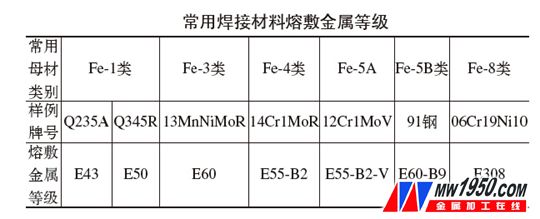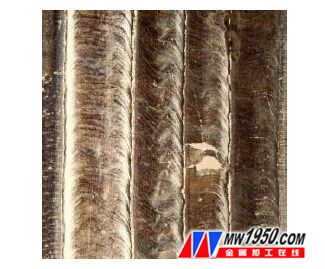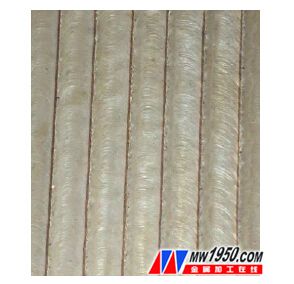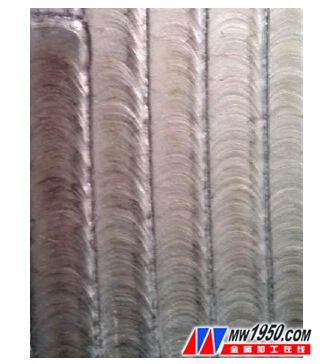Figure 1: Domestic welding tape / flux bead Figure 2: Imported solder ribbon / flux welding Figure 3: Domestic welding belt / imported flux welding The above issues require improvements from welding material manufacturers to enhance product quality and cost-effectiveness, aiming for high-quality, affordable solutions that can attract consumers and build strong national brands in the ongoing localization efforts. More exciting content: Welcome to Metalworking Online》》》Essen Special Report The 19th Beijing Essen Welding & Cutting Fair Intelligent Material Cabinet,Intelligent Industrial Storage Cabinet,Intelligent Tool Holder Management Cabinets Jiangsu Xicang Intelligent Technology Co., Ltd. , https://www.xciwarehousing.com





Localization trend and improvement direction of stainless steel strip surfacing for pressure vessels
Main Products and Common Welding Consumables
Our company was established in June 1954, specializing in the design and manufacturing of thermal power generating boilers with capacities ranging from 50 to 1000 MW. In addition to our core products, we also produce auxiliary equipment, petrochemical containers, nuclear energy equipment, industrial boilers, and military-grade components. Since the founding of the People's Republic of China, we have consistently held a leading position in the domestic thermal power equipment market, with an output share exceeding 35% and ranking first nationwide.
Due to the wide variety of products, diverse base materials, complex structures, and high manufacturing challenges, our welding capabilities are among the best in the country. We have extensive experience in the development and application of localized welding consumables. The deposited metal grades for commonly used welding materials are listed in the attached table. Currently, nearly 90% of our products use locally produced welding consumables.
Localization Trend
In some coal and petrochemical products, the inner walls of containers are often designed with a double-layer stainless steel surfacing corrosion-resistant structure. For large-diameter casings with thick walls and extensive stainless steel surfacing on the inner wall, electroslag surfacing (ESW) or submerged arc welding surfacing (SAW) is typically used. While ESW offers advantages like high deposition efficiency and low dilution rate, it has limitations such as shallow penetration, poor resistance to hydrogen stripping, and lower bonding strength. Additionally, ESW can affect the roundness of the workpiece, making SAW a more suitable option in such cases.
Previously, imported surfacing welding consumables dominated the market due to their superior process performance and quality. However, they come with disadvantages like high costs and long lead times. As competition in the manufacturing industry intensifies, the demand for localized welding consumables has grown significantly. Local manufacturers have seized this opportunity, investing in R&D to close the technological gap with imported products. They now offer better cost, delivery, and after-sales support, breaking the monopoly of foreign suppliers and rapidly expanding their range of stainless steel welding consumables.
Challenges and Improvement Directions
After extensive testing and application of domestic stainless steel welding strips and fluxes, we found that their mechanical properties have significantly improved and are now comparable to imported alternatives. They also offer better pricing and faster delivery. However, there are still subtle issues that need attention.
(1) Appearance, Packaging, and Identification Issues
Some domestic stainless steel welding strips only have basic information like grade and batch number on the outer packaging, but lack details on the inner layer. This makes it difficult to identify the seal and corrosion-resistant layers after opening. It is recommended that manufacturers add labels or logos on the innermost part of the welding strip.
Additionally, imported welding strips usually have smooth edges with minimal burrs, while domestic ones often have rough edges, affecting feeding during welding. Adding a trimming step before use would improve safety and usability.
(2) Process Performance of Domestic Submerged Arc Surfacing Stainless Steel Strips
Some sintered fluxes suffer from uneven particle size, often failing to meet granularity requirements. Their "powder surface" shape leads to environmental pollution, poor slag removal, and weld defects like porosity and slag inclusion. These issues increase workload, waste resources, and raise costs. Manufacturers should strictly adhere to standards to ensure consistent flux quality.
Furthermore, some domestic welding strips and fluxes show problems like incomplete bead formation, undercutting, and poor fusion. Imported fluxes generally perform more reliably. Replacing them with similar imported products often resolves these issues. Analysis suggests that low-melting substances in domestic fluxes may cause poor bead formation during solidification. Optimizing the refining process could help improve this.
Adaptive material cabinets are a groundbreaking innovation in storage solutions. These cabinets possess the ability to sense and react to their surroundings, offering customizable and efficient storage experiences. By incorporating intelligent materials, these cabinets can adjust their size, shape, or internal configuration to accommodate various objects and spaces.
Classification:
Shape-Shifting Cabinets: These cabinets can change their overall shape to fit different spaces or objects. For example, a cabinet might expand to accommodate a large item or contract to save space.
Self-Organizing Cabinets: These cabinets utilize advanced sensors and algorithms to automatically arrange and sort stored items based on user preferences or usage patterns.
Temperature-Controlled Cabinets: Designed to maintain specific temperature ranges, these cabinets are ideal for storing temperature-sensitive items such as medications, food, or electronics.
Humidity-Controlled Cabinets: Similar to temperature-controlled cabinets, these cabinets regulate humidity levels to protect items from damage caused by moisture or dryness.
Light-Sensitive Cabinets: These cabinets can adjust their internal lighting based on ambient light conditions or user preferences, providing optimal visibility for stored items.
Category 2: Smart Material Cabinets
Smart material cabinets combine traditional storage functionality with advanced technology, offering enhanced features and convenience. These cabinets often incorporate features such as digital displays, connectivity options, and automation capabilities.
Classification:
Digital Display Cabinets: Equipped with screens or displays, these cabinets can provide information about stored items, inventory levels, or access history.
Connected Cabinets: These cabinets can be connected to the internet or other devices, allowing for remote access, inventory management, and integration with smart home systems.
Automated Cabinets: These cabinets utilize automation technology to perform tasks such as opening and closing doors, adjusting shelves, or retrieving items.
Security-Enhanced Cabinets: These cabinets incorporate security features such as biometric scanners, alarms, or surveillance cameras to protect stored items from theft or unauthorized access.
Energy-Efficient Cabinets: Designed to minimize energy consumption, these cabinets may incorporate features such as LED lighting, efficient cooling systems, or smart power management.
Multifunctional material cabinets are versatile storage solutions that can be adapted to various needs. These cabinets often incorporate modular designs, interchangeable components, or hidden compartments to maximize their utility.
Classification:
Modular Cabinets: These cabinets consist of interchangeable modules that can be combined in different configurations to create custom storage solutions.
Hidden Compartment Cabinets: These cabinets feature concealed compartments or drawers that can be used to store valuable or sensitive items.
Multi-Purpose Cabinets: These cabinets can serve as both storage and display units, incorporating features such as glass doors or adjustable shelves.
Workstation Cabinets: These cabinets are designed to integrate with workspaces, providing storage for tools, equipment, or supplies.
Entertainment Cabinets: These cabinets are optimized for storing and displaying media devices, such as televisions, gaming consoles, or sound systems.